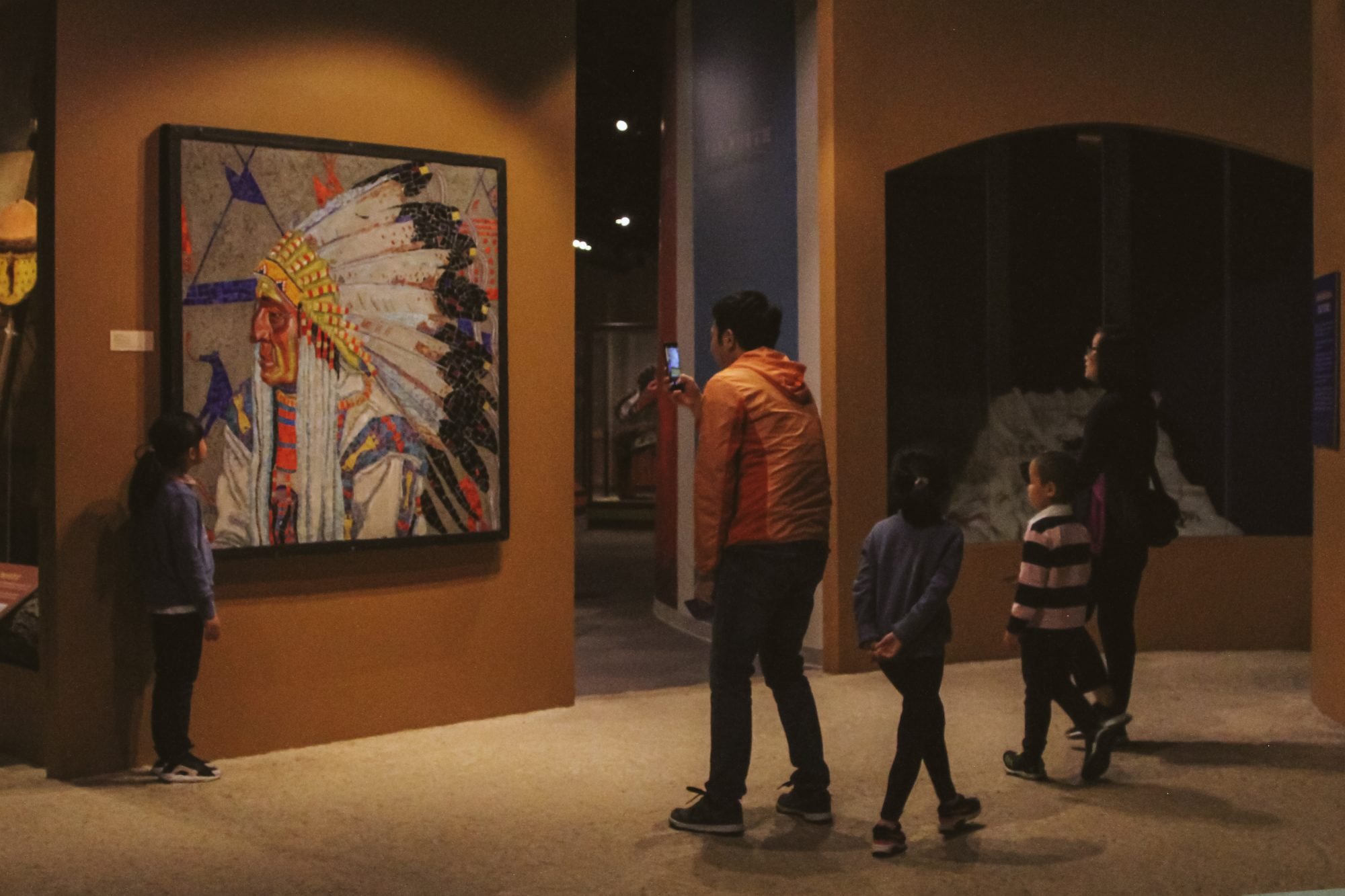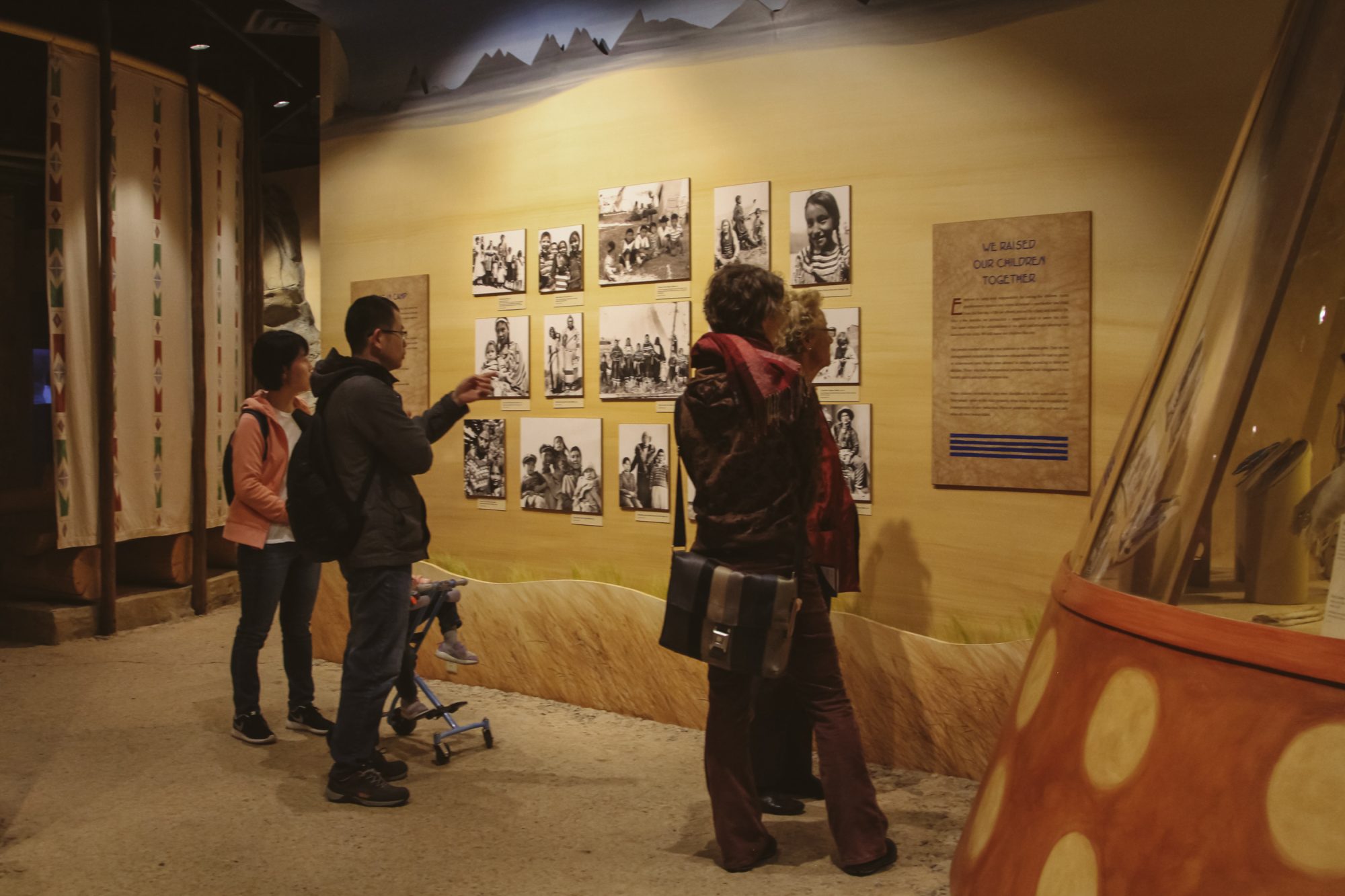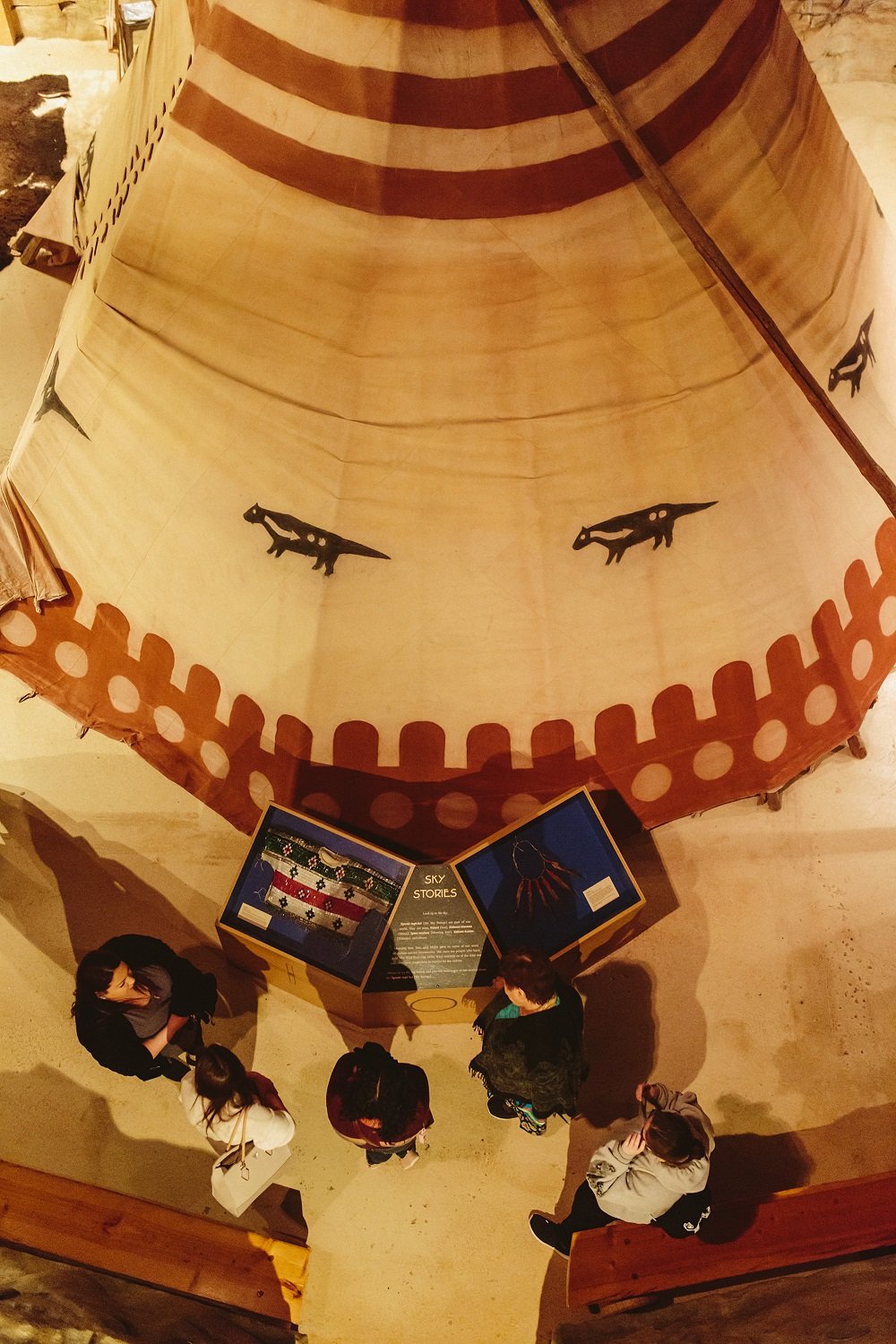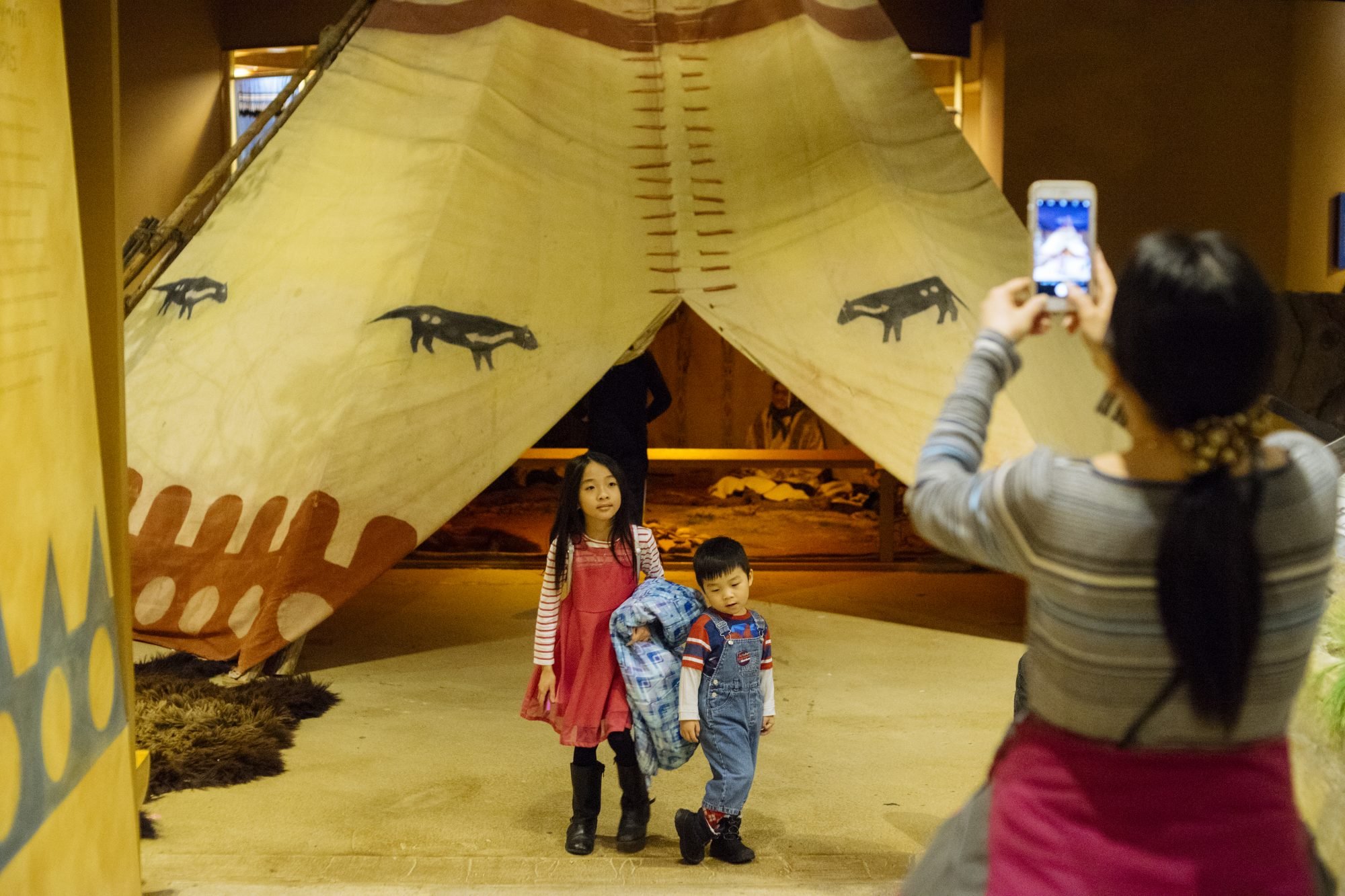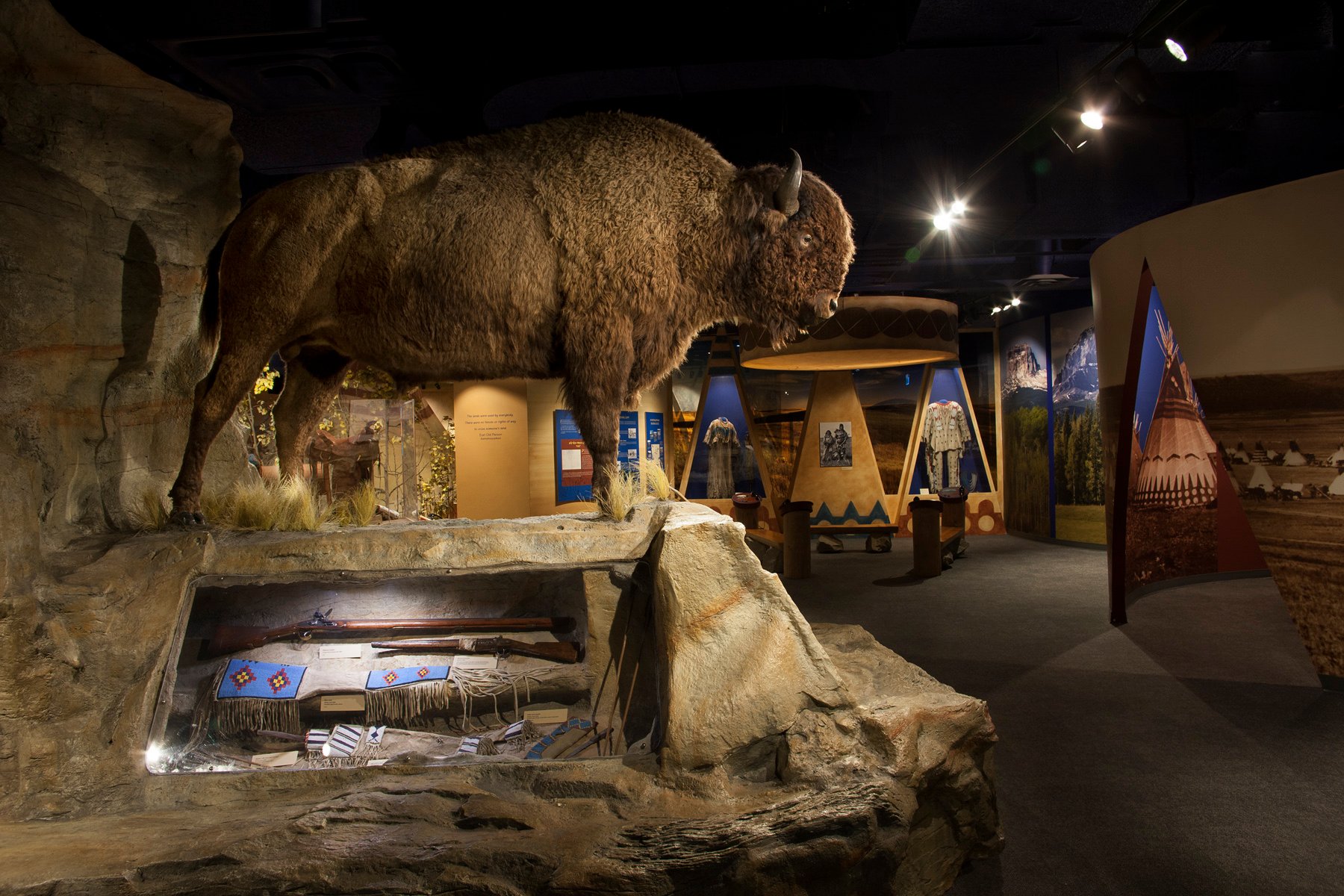Niitsitapiisini: Our Way of Life opened in 2001
Niitsitapiisini: Our Way of Life was the result of a groundbreaking partnership between Glenbow and the Blackfoot Confederacy. Eighteen Blackfoot Elders worked with Glenbow staff to lead the design of the exhibition and infuse traditional knowledge and contemporary lived experiences into an innovative storytelling experience that shared the history and culture of the Blackfoot people. The exhibition has been an important cultural resource for Indigenous and non-Indigenous museum visitors for almost 20 years.
The Niitsitapiisini Blackfoot Gallery Committee started work in 1997. After four years of discussion, research, and collaboration, the gallery opened in November 2001. The project team included:
Doreen Blackweasel (Amsskaapipikani), Tom Blackweasel (Amsskaapipikani), Andy Black Water (Kainaiwa), Jenny Bruised Head (Kainaiwa), Clifford Crane Bear (Siksika), Louise Crop Eared Wolf (Kainaiwa), Charlie Crow Chief (Kainaiwa), Rosie Day Rider (Kainaiwa), Carrie First Rider (Kainaiwa), Earl Old Person (Amsskaapipikani), Allan Pard (Apatohsipikani), Jerry Potts (Apatohsipikani), Pat Provost (Apatohsipikani), Pete Standing Alone (Kainaiwa), Jim Swag (Apatohsipikani), Donna Weaselchild (Siksika), Frank Weasel Head (Kainaiwa), Clarence Wolfleg (Siksika), and Herman Yellow Old Woman (Siksika).
